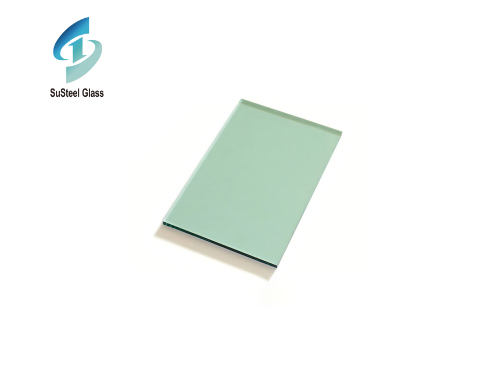Painted glass has emerged as a captivating medium for interior design, adding a touch of sophistication and artistic flair to residential and commercial spaces alike. This versatile material offers endless possibilities for creativity and customization, allowing designers to transform ordinary surfaces into stunning works of art.
The process of painting glass involves applying specialized paints or coatings to the surface of the glass, creating vibrant patterns, intricate designs, or bold colors. Whether it's abstract motifs, geometric patterns, or realistic landscapes,
painted glass can be tailored to suit any design aesthetic or theme, making it a versatile choice for interior decoration.
One of the key advantages of painted glass is its ability to enhance natural light and create visual interest within a space. The translucent nature of glass allows light to pass through, illuminating the painted surface and adding depth and dimension to the overall design. This effect can be particularly striking in areas such as feature walls, partitions, or decorative panels, where painted glass serves as a focal point, capturing the attention of occupants and visitors.
Moreover, painted glass offers practical benefits beyond its aesthetic appeal. It can be used to conceal or camouflage unsightly elements such as structural columns, utility panels, or storage areas, helping to maintain a cohesive and visually appealing environment. Additionally, painted glass is easy to clean and maintain, making it suitable for high-traffic areas such as lobbies, corridors, and bathrooms.
Furthermore, painted glass can be customized to incorporate functional elements such as privacy screens, signage, or branding elements. By integrating text or graphics into the painted design, designers can communicate information or create visual cues that enhance wayfinding and brand identity within a space.
In recent years, advancements in glass painting technology have expanded the possibilities for creativity and innovation in interior design. Digital printing techniques allow for precise reproduction of intricate designs and photographic images, opening up new avenues for customization and personalization. Additionally, environmentally friendly paints and coatings ensure sustainability and compliance with green building standards, further enhancing the appeal of painted glass in modern architecture.
In conclusion, painted glass stands as a testament to the intersection of artistry and functionality in interior design. With its ability to transform spaces with beauty and elegance, while also offering practical benefits such as light enhancement and customization, painted glass continues to captivate designers and occupants alike. As the demand for unique and expressive interiors grows, painted glass is poised to remain a timeless and versatile choice for creating memorable and inspiring environments.

 Exploring the World of Green Tinted Glass Products: Versatility and Sustainability
Exploring the World of Green Tinted Glass Products: Versatility and Sustainability
 Exploring the Versatility and Elegance of Custom Thick Glass
Exploring the Versatility and Elegance of Custom Thick Glass



